
All categories
Featured selections
Trade Assurance
Buyer Central
Help Center
Get the app
Become a supplier

(40 products available)






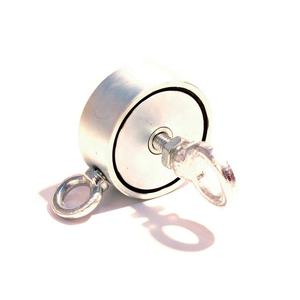

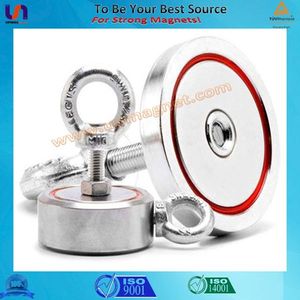












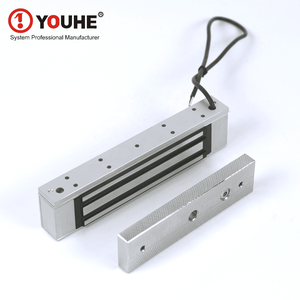

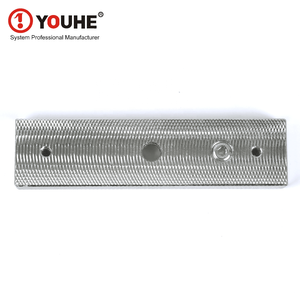




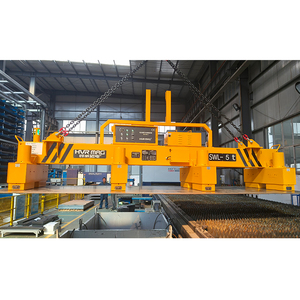





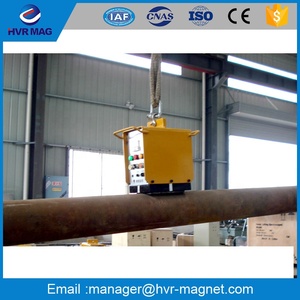

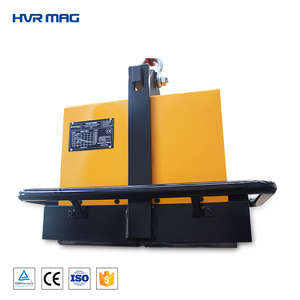
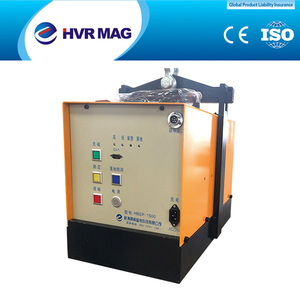
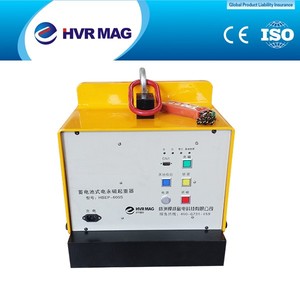
Permanent:
A permanent magnet lifter uses high-energy magnets to hold load mechanically. Even though made of permanent magnets, energy-efficient electromagnets are needed to reduce their magnetic field effect slightly. As permanent magnets do not require power, they are ideal for continuous and challenging operations. Owing to the advantage of being able to set and forget, users benefit from further energy savings. Unlike other types, these models are simple and easy to operate, low on maintenance, and offer consistent reliability, particularly in the warehouse and on production lines.
Electromagnetic:
These lifting magnets utilize electric current to create a magnetic field, allowing the load to be picked up or released. The magnetic power can be adjusted, making them perfect for different loads. This flexibility is one of the reasons why electromagnets are popular used in heavy-lifting operations. However, the electromagnet requires a stable power supply. This model is ideal, especially while working on steel plates, as the magnetism can be regulated to suit different plate measurements and weights. Electric power enables load control to lift safely, especially with delicate or variable weight products.
Positioning Magnets:
Battery-operated hybrid or permanent staggered and induced electromagnet polarisation electromagnetic positioning magnets. They are perfect for component placement. Many of these positioning magnets come in compact sizes, making them flexible, particularly for small and elaborate tasks. These magnets are often found in industries such as automotive manufacturing and construction where precise placements are very important. Due to its selective and momentary magnetisation feature, this tool offers opportunities for positioning metal parts with accuracy and without leaving distortion on the final products.
Steel and Metal Industry:
In this industry, there are great usages in transferring and handling heavy steel plates, bars, and scraps, widely employing battery-operated lifting magnets. These magnets ease the lifting process, increasing work speed and ensuring worker safety. Further, battery-powered tools reduce overhead and provide greater flexibility when dealing with different tasks. Among the tasks performed are moving raw materials in steel mills and lifting large bulk metals in machine shops.
Automotive Industry:
Various magnet lifters magnet system parts like engine components, chassis parts, and heavy assemblies. The precision is very important in automobile production. There is a great advantage in using battery-operated magnets to enhance efficiency during assembly and minimize manual handling. Also, they assist in quality control, eliminating distortion and ensuring safe lifts only on metal parts. Depending on the operation, their compact size and light weight make them particularly suitable for use in restricted space or while dealing with small auto parts.
Construction Industry:
In the construction industry, there is a usage of battery lifting magnets mainly for transporting steel beams, sheets, and other heavy metal loads. These magnets enhance both the safety and efficiency of the site by replacing chain slings and cranes, giving powerful but light solutions to lifting that needs minimum human effort. Operation autonomy contributes to lifting accuracy, which is always important for load placement during construction activities. Besides, working on-site is made easier by its cordless conduct.
High Load Capacity:
The lifting magnets handle varying weight loads; thus, they are applicable in many lifting jobs. The capacity varies depending on the model, but they usually lift from 2200 pounds to slightly below 5500 pounds. They employ strong neodymium permanent magnets or electromagnets to ensure stronghold.
Powerful Battery:
The brands and featured battery-operated magnets come with lithium-ion or lead-acid batteries with varying capacities depending on the model. They recharge easily and support several lifting operations before needful recharge. In some models, the battery is designed to monitor the power state on the magnetic lifting device for easy and effective power management.
Safety Features:
These battery-operated magnets embody some important safety device features. These include non-slip coatings and load sensors, lift and hold indicators, informing of insufficient magnet strength, and low battery power. Furthermore, many of them have emergency drop and manual magnetism suppression features in case of power supply failure to enable easy lifting of the load.
Tough Construction:
The bearing of battery-operated lifting magnets is sealed; therefore, they are resistant to water, dust, and other harmful materials. The housings are fabricated with steel or aluminium alloy and are fitted with strong magnetic components to withstand any work-related stress. This ensures uncompromised performance and reliability.
Simple Operation:
The design and operation of the lifting magnet are safe, with easily controlled switches and indicators, rendering them helpful for lifting novices and professionals. Third, cordless operation allows freedom and flexibility when lifting.
Magnets should be inspected before use to check for any signs of damage. Also, ensure that the lift area is clear and free of any hindrance. Properly position the magnet on the item to be lifted, ensuring level and centred. Switch on the magnet to create a bond with the target material. Gradually lift the load with the crane or hoist while monitoring stability. After lifting, transport the item to the required area while keeping the load steady.
Regular Inspection:
Battery lifting magnets should be inspected frequently for signs of wear, corrosion, or damage. Also, check the magnet surface for debris or contaminants that can reduce magnetic adhesion. Further, check the battery level and charging system and ensure all parts are dangling properly and there are no loose connections.
Cleaning:
Avoid cleaning the magnets with chemical cleaners that will dissolve its base material. Wash the external part with a damp cloth, focusing on the area around the magnets.
Battery Maintenance:
Follow closely the manufacturer's instructions on the strength and usage of the battery. To maintain its duration, store the battery in low-temperature space and frequently check it for any signs of swelling or damage. Also, ensure the appearance of the lifting magnets is neat, with dirt and debris accumulation on or around the magnets being cleared regularly.
Repairs:
Consult a professional for repairs of battery-operated lifting magnets that require internal repairs. Do not try to disassemble the lifting magnets yourself, especially the internal batteries or the magnetic circuit. Ensure proper storage of the device in a dry space free from extreme temperatures.
Magnet Strength:
Strong magnetism guarantees the safe lifting of heavy loads. Manufacturers employ advanced permanent or electromagnet hybrids to attain this strength. Check the rated magnetic power to ensure it surpasses the average load required to be lifted.
Material Selection:
Strong and rough materials like steel melting magnets. Quality lifting magnet pads are manufactured with premium steel alloys for strength and resistive wear. In this case, look for external coatings that fight corrosion for improvement of longevity in whether various environments.
Battery Technology:
A prominent battery is a key feature in battery-operated magnets, allowing many lifting operations. Lithium-ion batteries are lightweight and have a high capacity. Ensure efficiency through easy recharging and interval extensions.
Load Release Mechanism:
A secure and effective load-releasing device is very instrumental in ensuring safety. Quality magnets have manual and automatic systems that help prevent magnetism from dropping load even in low-power situations.
Low Battery Alerts:
Other models feature low battery indicators that inform when the battery needs some charging to maintain an adequate magnet strength.
Load Testing:
Always do load tests on lifting magnets to ensure they handle the required weight. Overloading or underutilising is dangerous, affecting safety and damaging the equipment and materials handled.
Emergency Release:
Emergency release mechanisms enable the operator to detach the load magnetically, even instantly, in case of electrical failure.
A1: Various differences in load characteristics and application usage largely determine the choice. The magnet pull test should be greater than the object's weight to ensure efficiency.
A2: Battery lifting magnets have seal shells made of steel, confirming their operation in different temperatures. However, extra precautions are needed for workers.
A3: Yes. These lifting magnets work through magnetic attraction, which only occurs in ferromagnetic materials.
A4: Maintenance must be done after each heavy usage or exposure to a dusty or corrosive environment. Frequent inspections are recommended to check the battery and the magnetic strength.
A5: Magnet lifters incorporate strong coatings or further vertexing features for corrosion, which depends on the environment and usage.